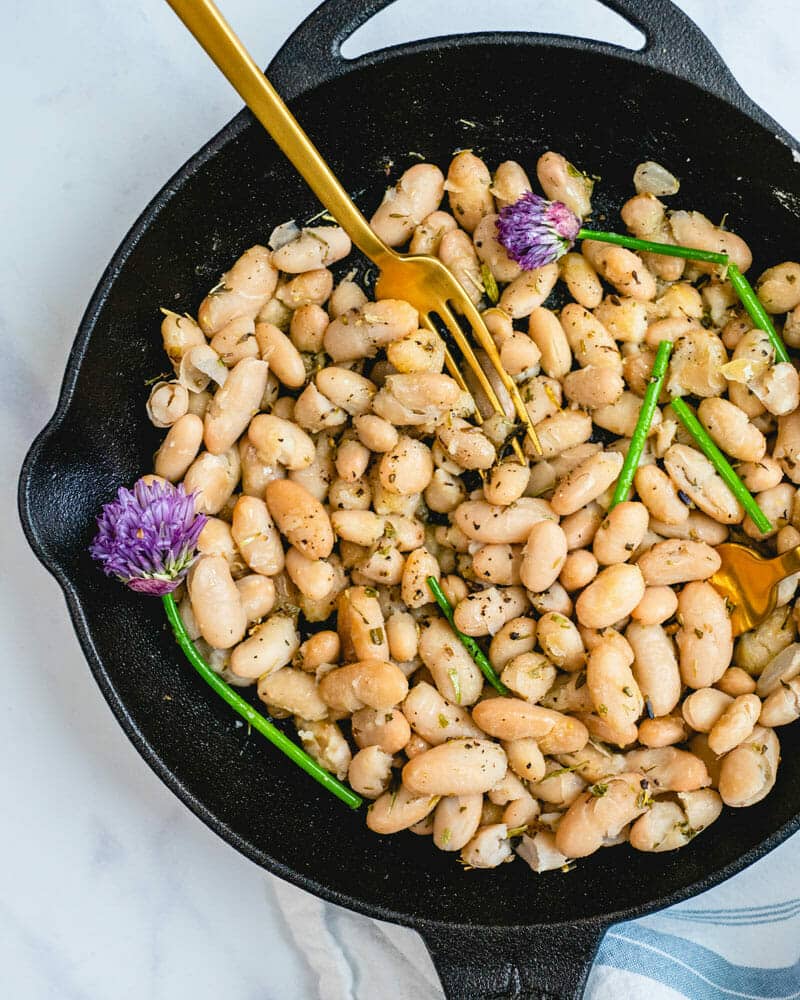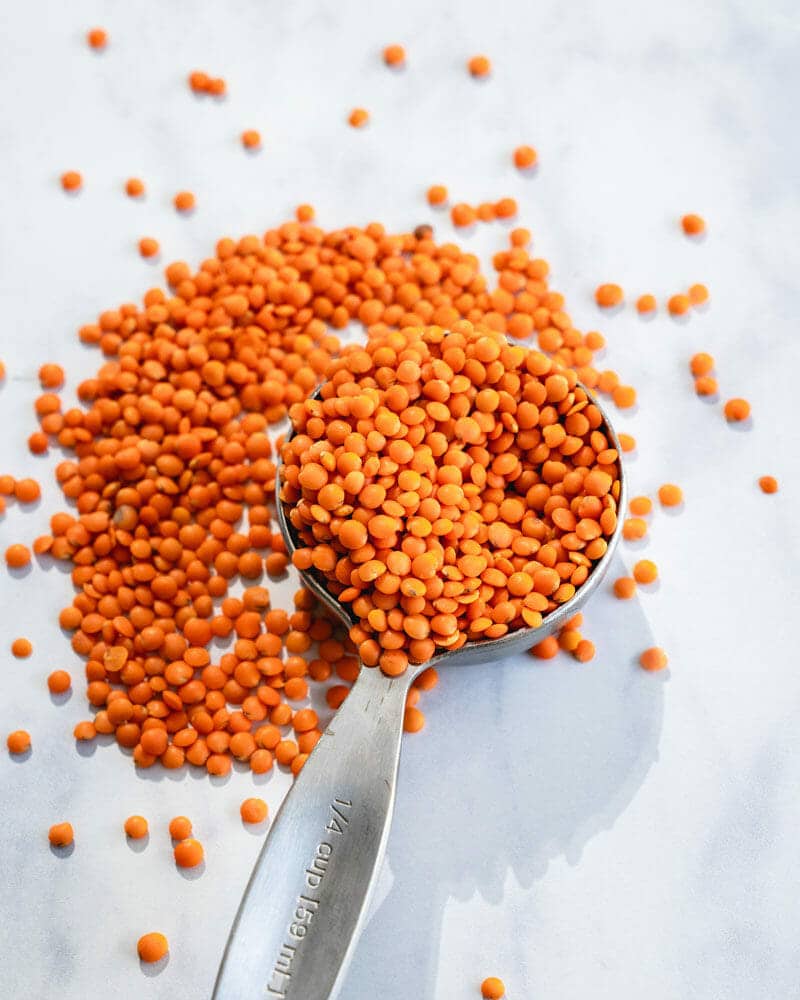This post may include affiliate links; see our disclosure policy.
What are the differences between lentils vs beans? Which is better? Here’s what you need to know about these powerhouse legumes.

Lentils vs beans: which is better? Let’s ponder for a moment. These two plant-based proteins are both part of a healthy diet. But is there a clear winner between the two? What are some of the major differences? Here’s a breakdown.
Lentils vs beans: overview
First up, let’s discuss the definition of each of these foods. Lentils and beans both part of the legume family, also called pulses. This plant family also includes peas and peanuts.
- What are lentils? Lentils are small dried lens-shaped seeds. They’re full of plant-based protein and are a staple of diets around the globe, from India to France to Ethiopia. There are many different varieties of lentils, brown, red, green, yellow, black, and French lentils. (For more, go to What are Lentils?)
- What are beans? Beans are members of the legume family, the seed of a flowering plant. There are over 40,000 bean varieties in the world, though only a fraction are mass produced. Common types of beans are: black, kidney, pinto, and white beans, soybeans / edamame (including tofu), chickpeas, and peas (including split peas).
Lentils vs beans: nutrition info
Next, let’s review the nutritional differences between lentils and beans. Both are very high in protein and fiber. Here’s the basic nutrition facts for 1 cup of cooked lentils vs 1 cup cooked pinto beans:
| Ingredient | Calories | Protein | Carbs | Fiber | Fat |
| Lentils | 230 | 18 grams | 40 grams | 15 grams | 1 gram |
| Pinto beans | 245 | 15 grams | 45 grams | 15 grams | 1 gram |
Data sources: Lentils nutrition, Beans nutrition

Nutrient comparison
To understand the full picture of lentils vs beans, you also have to look at nutrients! Here’s the breakdown on nutrients:
- Lentils are a good source of B vitamins, iron, magnesium, potassium and zinc. They’re a great source of polyphenols, which have potential cancer-cell inhibiting effects.
- Beans have lots of nutrients, a good amount of zinc, copper, manganese, selenium, and vitamins B1, B6, E, and K.
Glycemic index
Another measure to look at is glycemic index. The glycemic index score (GI) shows how a food affects a person’s blood sugar levels. A low score indicates that the food has less impact on your blood sugar, so low levels are good here. This is specifically relevant for people with diabetes. Scores range from Low GI: 1 to 55, Medium GI: 56 to 69, and High GI: 70 and higher. (Read more at Mayo Clinic.)
- Lentils have a glycemic index of 32, so they are a low glycemic index food. (source)
- Kidney beans have a glycemic index of 24 and chickpeas have a GI of 28, so they are also a low GI food. (source)

So lentils vs beans: which is better?
Reference the table above and you can see the following differences between lentils vs rice:
- Calories and carbs: Lentils have similar calories and carbs to that of beans.
- Protein: Lentils have slightly more plant-based protein than beans, but they are both exceptionally high. 1 cup provides around 30% of your daily value.
- Fiber: Lentils and beans have the same fiber. 1 cup cooked has 60% of the daily value.
- Fat: Lentils and beans are low fat foods.
- Nutrients: Both lentils and beans are loaded with beneficial nutrients.
- Glycemic index: Both lentils and beans are low glycemic index foods.
Bottom line: Lentils and beans are both part of a healthy diet! They are very similar nutritionally and nutrient-dense: high in protein, fiber, and nutrients, and low in fat.




Thank you for the information, I’m batching it now, so I need to take care of myself
This was a great article and answered all my questions. Thanks!